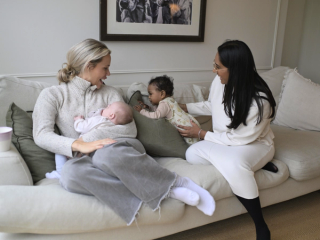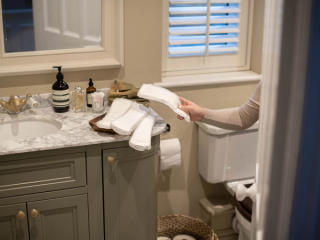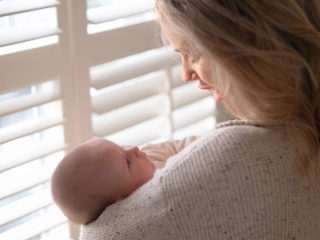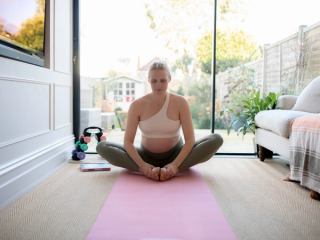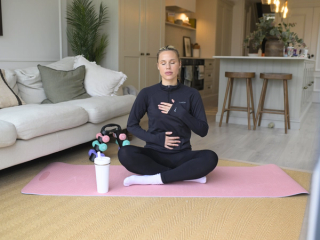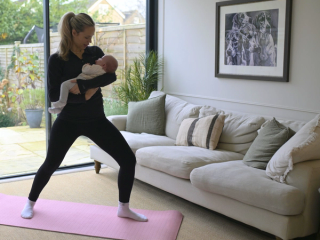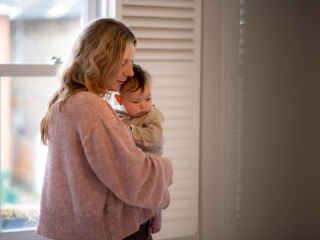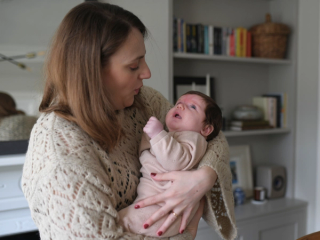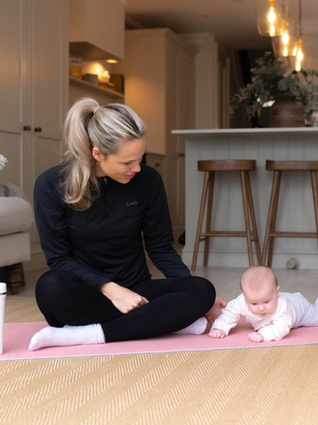
- Home
- Advice And Support
- Newborn
- Postnatal Care
- Returning To Exercise Postpartum
Returning to exercise postpartum
Recovering after pregnancy and birth and returning to full exercise really is a journey. Aby, Pelvic Health Specialist, shared her guidance on how and when you should return to exercise after the arrival of your little one.
As clichéd as it sounds, recovering after pregnancy and birth and returning to full exercise really is a journey. After all your body has been through, there’s a lot to recover from. Pregnancy alone causes stretching and thinning of the abdominal muscles and pelvic floor, which are key muscle groups to supporting all movement. Then we must think about the injuries from the birth you had.
All Caesarian sections are major abdominal surgery and even the smoothest of vaginal births cause trauma to the pelvic floor and vaginal walls. The great news is that you can rehab from pregnancy and birth just like you would from any other injury. Exercising after having a baby is actually a great way to enhance your recovery, so it’s good to get going as soon as we feel ready. However, it’s all about doing the right thing at the right time.
What time frames are we looking at?
This very much depends at what you are looking to return to and the extent of your injuries. You may have had your GP “sign you off” at your 6 – 8 week postnatal check. This is to sign you off as medically fit for general life, it is not a return to exercise check.
Time frames are generally unhelpful because of how much it can vary from one person to another. A more useful marker is hitting recovery goals. For example, when you are free from all symptoms and can do 10 pelvic floor activations (where you squeeze and release your pelvic floor muscles) you can start postnatal Pilates. This could be at 2 weeks if you had a no-stitches vaginal birth, or it could be at 12 weeks if you had a grade 4 tear.
The earliest we would look to return to weight training is 8 weeks and jogging is 3 months, these are due to the body’s set healing times that we cannot change. For the majority it is much longer because those markers are assuming you have had plenty of sleep, eaten well and had no setbacks (doesn’t really match with the average new born experience!).
So how do I return safely?
Whether you are planning to start exercising at 6 weeks or 6 months, you have to lay down the foundations first. Here are the four postnatal rehab steps…
Step 1 - Awareness
We start with breathing exercises and how you coordinate this with your pelvic floor and deep abdominal muscles. It’s important to be able to feel what your body is doing. You can tie your shoelace without looking at your hands, right?! You have the exact same brain-to-muscle pathway to these important muscles, it just isn’t well trodden. With enough practice we can make a clear pathway that gives you great feedback. This creates a strong foundation to build on.
Step 2 - Control
Now we start putting this great awareness into practice with whole body movements. It’s all very well being able to control your pelvic floor and deep abdominals on their own, but can we coordinate it with movement. This is a great time to start gentle stretches, postnatal Pilates or yoga, as this will help you regain control and to develop flexibility throughout your body.
Step 3 - Strength
This step is where we start to challenge our body and so would be started once all acute healing has taken place, usually 8 – 12 weeks at the earliest. We need to start to build resistance into your exercise to strengthen your whole body. This step is skipped the most and therefore where issues can begin for some.
If you are looking at HIIT, running or sport you must rebuild the strength that would have been lost whilst you were growing a baby. You can’t start where you left off because you did a few weeks of postnatal Pilates. Did you know for example that to significantly reduce risk of injury when jogging you need to be able to perform 20 single leg bridges in a row? That’s hard!
Even if you have no interest in higher intensity exercise, we want to start training your body for motherhood. After all your little bundle will get increasingly heavy and you are lifting heavy weights every day! Think of how heavy that buggy is when you lift it into the car boot – the average buggy weight is 20 kg. Symptoms such as low back pain are our body’s way of communicating that it can’t cope with the demands being placed on it. We need to train our body for what we are asking it to do day to day.
Step 4 - Function
All the building blocks of awareness, control and strength can now be put into practice so you can live a full life – hooray! This might be being able to participate in Mum’s race at sports day, jump on the trampoline with your toddler, or getting back to a full exercise regime. It is so important not to get carried away at this stage and still gradually introduce these new activities. You can’t go from no impact to sprinting, or light weights to Olympic weight lifting. The Couch to 5k programme is free and a great gradual introduction to impact. This is really where you will reap the rewards of your patience and hard work.
At the start of your postnatal journey, exercise can feel daunting. However, whilst your postnatal body is different, it is no less powerful and capable with the right support. Plus, there is so much help out there with pelvic health physiotherapists and postnatal specialist fitness trainers, so reach out if you need some guidance. Most important, listen to your body and take it slow.
Advice & tips

Want to read more? Join the HiPP BabyClub for full access to this article.
As a BabyClub member, you'll get access to a range of exclusive benefits, including:
Monthly competitions
Discounts from our Partners
Expert advice tailored to your little one's age
Weaning recipes
HiPP shop discounts*
*10% off HiPP's online shop does not apply to our First Infant, Anti-Reflux or Comfort Formula Milk.
Important notice: Breastfeeding is best. Follow on milk should only be used as part of a mixed diet from 6 months. Talk to a healthcare professional.




